- News
- Reviews
- Bikes
- Components
- Bar tape & grips
- Bottom brackets
- Brake & gear cables
- Brake & STI levers
- Brake pads & spares
- Brakes
- Cassettes & freewheels
- Chains
- Chainsets & chainrings
- Derailleurs - front
- Derailleurs - rear
- Forks
- Gear levers & shifters
- Groupsets
- Handlebars & extensions
- Headsets
- Hubs
- Inner tubes
- Pedals
- Quick releases & skewers
- Saddles
- Seatposts
- Stems
- Wheels
- Tyres
- Tubeless valves
- Accessories
- Accessories - misc
- Computer mounts
- Bags
- Bar ends
- Bike bags & cases
- Bottle cages
- Bottles
- Cameras
- Car racks
- Child seats
- Computers
- Glasses
- GPS units
- Helmets
- Lights - front
- Lights - rear
- Lights - sets
- Locks
- Mirrors
- Mudguards
- Racks
- Pumps & CO2 inflators
- Puncture kits
- Reflectives
- Smart watches
- Stands and racks
- Trailers
- Clothing
- Health, fitness and nutrition
- Tools and workshop
- Miscellaneous
- Buyers Guides
- Features
- Forum
- Recommends
- Podcast
TECH NEWS
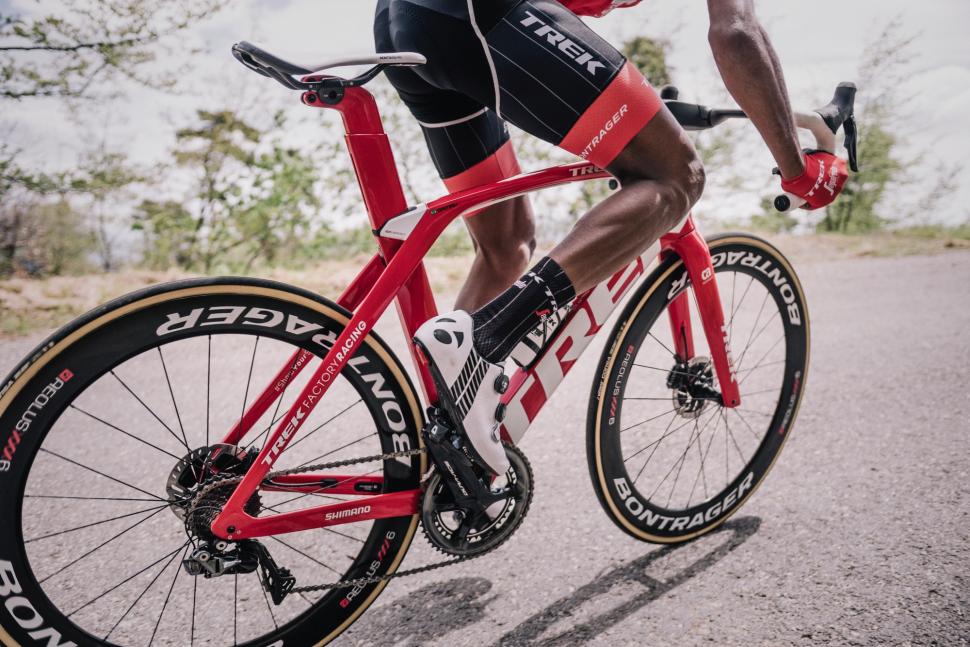 tk18_madone_slr_disc_segafredo_33_1.jpg
tk18_madone_slr_disc_segafredo_33_1.jpgNew Trek Madone: adjustable IsoSpeed plus disc brake options
Trek has announced a hugely updated Madone road bike with adjustable IsoSpeed, a new geometry and disc brake models. The rim brake version is lighter while the disc brake version has no aerodynamic penalty, according to Trek.
Trek has been busy with this one! What it certainly hasn’t done is just slap some disc brakes onto the existing Madone. Trek says, “What really sets the Madone apart is how it combines advanced aerodynamics, superior ride quality and ultra-light weight into the best race bike available today.”
It would say that, of course.
The new Madone will be available in top-end SLR models and in a slightly more accessible SL version.
Let’s go through the design features in turn.
Adjustable top tube Isospeed
Trek first brought in IsoSpeed on the Domane a few years ago and added it to the last incarnation of the Madone.
In short, IsoSpeed is a design that “maintains the diamond-shaped frameset geometry but ‘decouples’ the seat tube from the top tube, allowing the seat tube to flex with the forces of the road” (Trek’s words). The idea is that it smooths the ride, adding comfort and reducing fatigue.
This time around Trek has brought in a what it calls Adjustable Compliance Technology. Adjustable IsoSpeed was first released on the seat tube of Trek’s Domane. The drawing below is from Trek's white paper on the new Madone.
“The Madone Adjustable Compliance Technology [comprises] two frame elements integrated into each other just like the Domane SLR, but has been rotated into the top tube for aerodynamic advantage,” says Trek.
How does it work?
“The two frame elements are connected by the IsoSpeed decoupler and the bolted joint at the front,” says Trek. “In between the two frame elements is a vacant space with an adjustment slider that can move along the entire path. The seatmast element utilises the IsoSpeed decoupler to transfer the aft deflection of the upper aero section of the seatmast to an upward deflection of the lower seatmast element.
“The vacant space allows the lower seatmast to deflect in the upward direction while the main frame top tube element remains independent from the lower seatmast. The slider contacts both the lower seatmast element and main frame top tube element to limit the upward deflection of the lower seatmast per the rider’s preference.
“If the slider is towards the front of the frame, a rider will experience more compliance because of the greater vacant space that allows the lower seatmast to deflect more. If the slider is near the back of the frame towards the IsoSpeed Decoupler, a rider will experience less compliance because the slider is inhibiting deflection in the vacant space in front of it.”
Trek reports that the compliance (the amount of force required to induce movement) at the saddle of a 56cm frame ranges from approximately 119N/mm to 175N/mm depending on the slider’s position. The 9 Series Madone had a stiffness of approximately 144N/mm. According to these figures, the new Madone is capable of both more compliance (+17%) and less compliance (-22%) than its predecessor. You have to have some good statistics to support any bike launch these days!
Trek says that a further benefit of this new design is the ability to match the vertical compliance closely across all frame sizes because the removable seat-mast element is nearly the same length across the board. Usually, a larger frame will have more compliance.
The new SLR version of the Madone features a damper to help control rebound of the seatmast. In other words, the speed at which the seat tube returns to its usual position after flexing is now regulated, the idea being to keep the ride feeling smoother and more stable.
The damper is made up of three parts: an elastomer damper, a housing for that damper, and the frame carriage. The damper is pre-loaded in compression by a set screw against the seatmast.
“When the seatmast element is loaded during an impact event at the saddle, it creates counter clockwise rotation when viewed from the perspective of the driveside of the bike,” says Trek. “This motion unloads the damper slightly and prepares it for the rebound event. As the seatmast begins to rotate back, the damper is re-loaded, thus slowing the motion and absorbing the rebound energy.”
Trek says that these changes “add up to a significant reduction in the vibration of the cyclist’s body: the end goal of any suspension technology” and that the new Madone offers anywhere from a 44-61% increase in the damping ratio (how rapidly the motion of the saddle and rider reduce back to normal following a large bump).
If you want more details on the effects of the Madone’s Adjustable Compliance Technology, check out Trek’s new Madone SLR white paper. There’s a lot of tech in there. I don’t have a link at the time of writing but I imagine it’s just a Google search away by the time you get to read it.
Aerodynamics
Trek says that it has focused massively on aerodynamic performance in the development of the new Madone, using both CFD (computational fluid dynamics) software and wind tunnel analysis to arrive at the final design, although that has had to be balanced against the addition of adjustable top tube IsoSpeed, a new geometry, updated components, the addition of disc brakes and the desire to keep the weight low. In other words, Trek hasn’t gone after aerodynamics at all costs.
“[Our] goal for the new Madone was to maintain aerodynamic drag performance of the current Madone (within 30g) across an averaged -12.5° to 12.5° yaw sweep. [We consider] this range to be the most common yaw a rider experiences based on real world data collection studies,” says Trek.
“Experimental results collected at the San Diego Low Speed Wind Tunnel… show an average of 3,216g [of drag] across a -12.5° to 12.5° yaw sweep vs the current [9 Series] Madone at 3,202g, a 14g difference that is within Trek’s project goal and within a wind tunnel’s experimental error band.”
Trek reports that the bikes were tested with two water bottles added and a pedalling mannequin. It says that the new Madone has a lower average drag (across yaw angles from 12.5° to -12.5°) than the Specialized Venge Vias.
Trek didn’t have access to the new Cannondale SystemSix that we showed you earlier in the week. Cannondale claims that the SystemSix is more aerodynamically efficient than the 9 Series Madone.
Light weight
Whereas aerodynamics pulls a frame design towards narrow tubes, the need for stiffness and light weight pushes it in the opposite direction so there’s always going to be something of a balancing act there.
“[Our] goals for the new Madone were to maintain aerodynamic performance of the current Madone and reduce or maintain bike weight of the rim brake version, all while adding several new features: adjustable compliance technology, a rebound damper, split bar and stem, and a redesigned aesthetic,” says Trek. “The disc brake bike was assigned a target of 7.5kg with the same features.”
Trek says that it analysed many finite element models in order to shave off weight while maintaining aerodynamic performance.
“The rim brake bike matches the current Madone (7.1kg/15.7lb), and the all-new disc brake bike weighs in at 7.5kg (16.6lb) depending on paint scheme,” says Trek.
The SLR frames are made from Trek’s OCLV 700 carbon while the SLs are OCLV 500 which, according to Trek, isn’t quite as light or as strong.
New geometry
The 9-Series Madone was available in two different geometries: low and stretched H1 and slightly more upright H2. The new Madone SLR comes in a single geometry called H1.5 which, as you might have guessed, sits between the two.
Frame stack (vertical distance from the centre of the bottom bracket to the top of the head tube), reach (horizontal distance between those two points) and head tube length have all been changed.
The 56cm model, for example, has an effective top tube length of 559.9mm – we might as well call that 560mm – a head tube of 151mm, a stack of 563mm and a reach of 391mm.
“H1.5 hits the sweet spot for a wide range of racers as it balances a traditional aggressive race geometry with a position that more athletes can hold longer with more comfort,” says Trek.
The Madone SL is built to Trek’s H2 geometry.
Most 9 Series Madone models came with a combined aero handlebar and stem but the Madone SLR features a two-piece system – still proprietary – with more stem options (90mm to 130mm lengths, and -7° and -14° angles), additional bar sizes (38cm to 44cm) and +/-5° of bar rotation.
The Madone SL doesn’t feature this integrated handlebar and stem but instead has a Bontrager Pro stem and Elite Aero handlebar.
Integration
The position of the centre-pull front brake on the rim brake version of the new Madone has been moved. It now sits at the back of the fork rather than at the front, the idea being to improve the bike’s aerodynamic performance.
“The all new rim brakes have been redesigned with improved functionality and ease of set up in mind,” says Trek. “The brake arms use independent spring tension adjustment screws to centre the brake pads, allow for precise pad adjustments as brake pads wear, and adjust lever pull force to the desired feel. The spacing screws range allows swapping between rim widths ranging from 23-28.5mm without adjusting the centre wedge.”
Each rim brake has a claimed weight of 152g (in the case of the front brake, that’s with an unpainted cover). They’ll take tyres up to 25mm wide, whereas most road brakes these days have enough clearance for 28s. The disc brake version of the Madone will take 28mm tyres.
A Bontrager Flare RT tail light attaches to the seat mast head. Trek is big on encouraging people to use a tail light even during the day.
Models
The Madone SLR comes in men’s and one women’s specific models. They use the same frame but the women’s version features a different saddle, handlebar width and stem length. All models have a lifetime warranty.
All of the Madone SLRs feature an OCLV 700 frame and an integrated two-piece carbon bar and stem. Here are the models and prices:
• Madone SLR 9 Disc, £10,000, Bontrager Aeolus XXX 6 TLR wheels, Shimano Dura-Ace 9170 drivetrain and hydraulic disc brakes
• Madone SLR 8, £6,750, Bontrager Aeolus Pro 5 TLR wheels, Shimano Dura-Ace 9100 drivetrain, Bontrager integrated rim brakes
• Madone SLR 6 Disc, £5,400, Bontrager Aeolus Comp 5 Disc TLR wheels, Shimano Ultegra 8020 drivetrain and hydraulic disc brakes
• Madone SLR 6 Disc Women's, £5,400, Bontrager Aeolus Comp 5 Disc TLR wheels, Shimano Ultegra 8020 drivetrain and hydraulic disc brakes
The SLR models are available in 'premium paint' options for an extra £550.
There’s also a Madone SL 6 in the range that uses Trek’s OCLV 500 carbon fibre which is said to be a little heavier and less stiff then OCLV 700. The Madone SL 6 doesn’t feature Bontrager’s integrated handlebar and stem but instead has a Bontrager Pro stem and Elite Aero handlebar. It comes with Bontrager Aeolus Comp 5 TLR wheels, a Shimano Ultegra 8000 drivetrain and Bontrager integrated brakes and is priced £3,600.
For more info go to www.trekbikes.com
Mat has been in cycling media since 1996, on titles including BikeRadar, Total Bike, Total Mountain Bike, What Mountain Bike and Mountain Biking UK, and he has been editor of 220 Triathlon and Cycling Plus. Mat has been road.cc technical editor for over a decade, testing bikes, fettling the latest kit, and trying out the most up-to-the-minute clothing. He has won his category in Ironman UK 70.3 and finished on the podium in both marathons he has run. Mat is a Cambridge graduate who did a post-grad in magazine journalism, and he is a winner of the Cycling Media Award for Specialist Online Writer. Now over 50, he's riding road and gravel bikes most days for fun and fitness rather than training for competitions.
Latest Comments
- mdavidford 5 sec ago
Not sure how that trailer can be legal under the current rules - does it have something that interacts with the chain/cassette to determine whether...
- HLaB 2 min 42 sec ago
I think I'll stick to using old bibs that are a bit too worn to where outside 😂
- chrisonabike 12 min 53 sec ago
Of course ... but the current logic seems to favour "I have bought it so therefore it is my right to use it. If I'm not supposed to it shouldn't...
- BikingBud 46 min 57 sec ago
Paddington Harrow Road crash leaves two seriously injured...
- mark1a 1 hour 52 min ago
He pays all the tax that the state he lives in requires of him.
- TheBillder 4 hours 12 min ago
I've had (past tense is deliberate) 3 of these over the past 5 years. I'm back here researching for a replacement as my last one broke last week. I...
- chrisonabike 6 hours 13 min ago
And the next time - plead sympathy for your addiction, caused by trauma from your previous "accident"...
- wtjs 6 hours 17 min ago
Butyric Acid... was the most disgusting thing I have ever smelt in the lab...
- ubercurmudgeon 6 hours 47 min ago
Even a stopped clock, etc, etc...
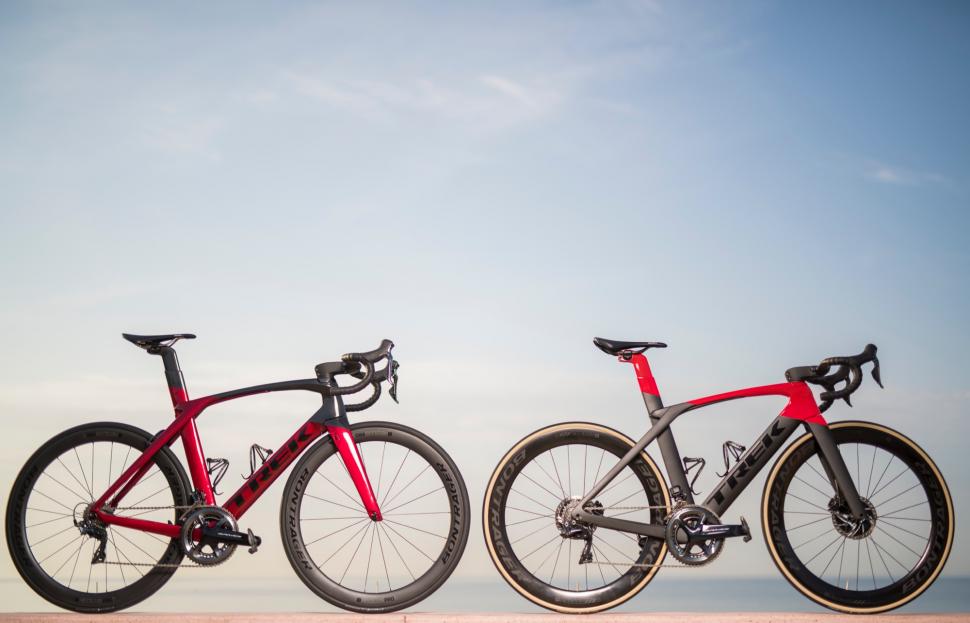

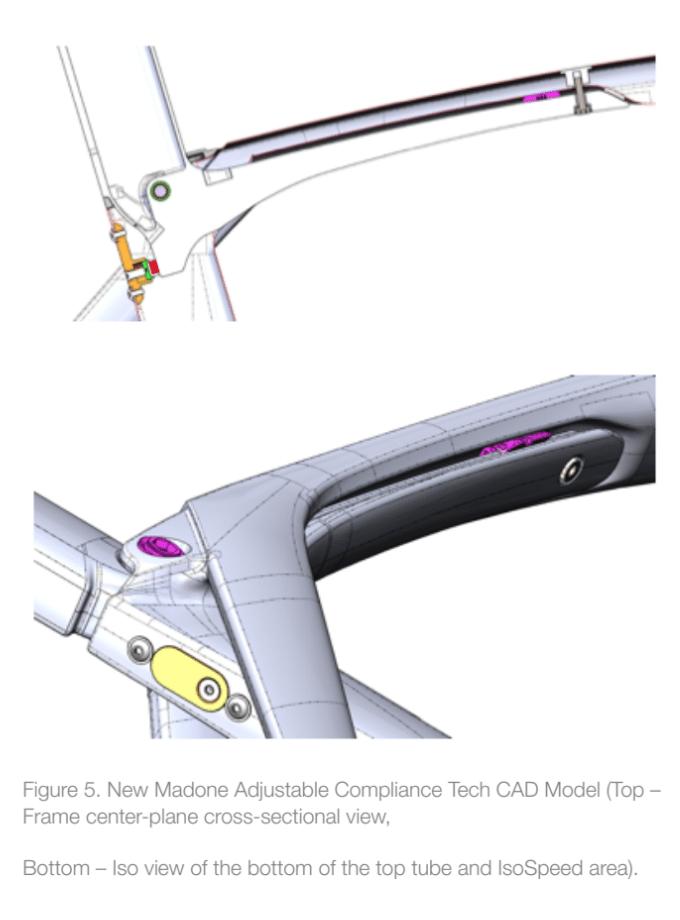
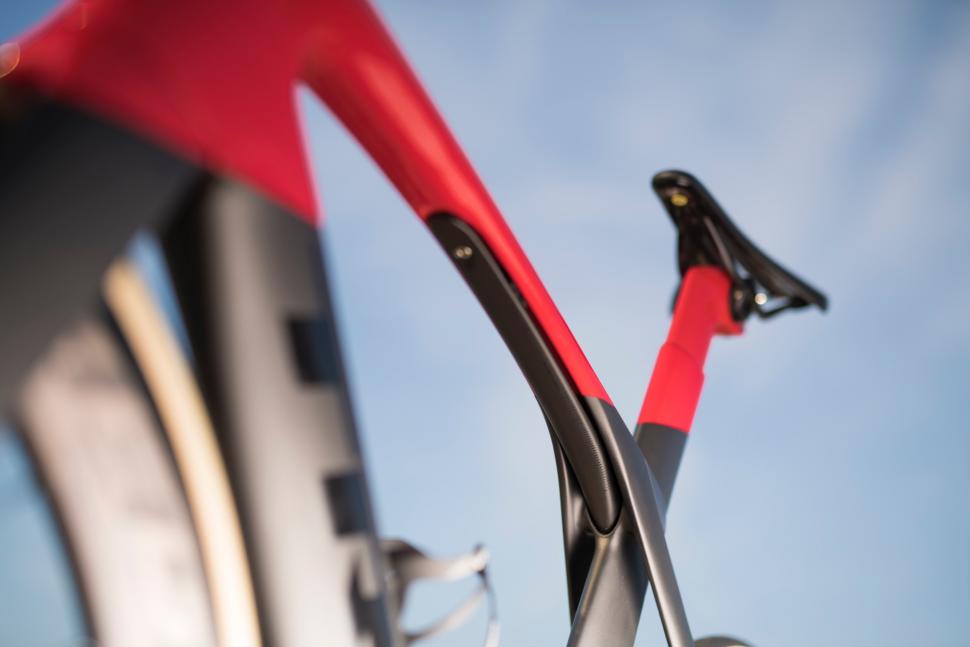
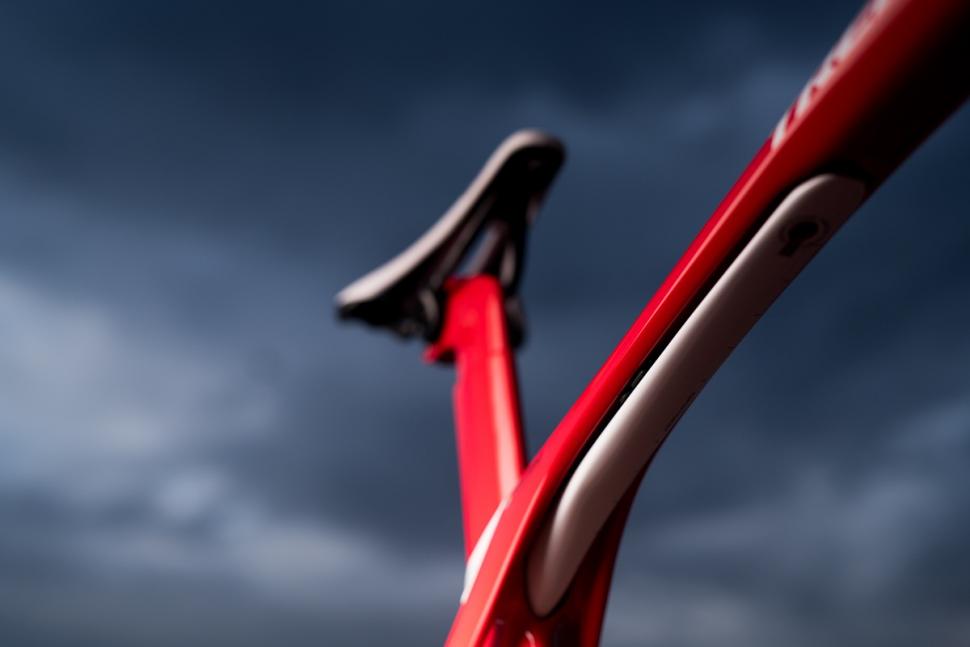
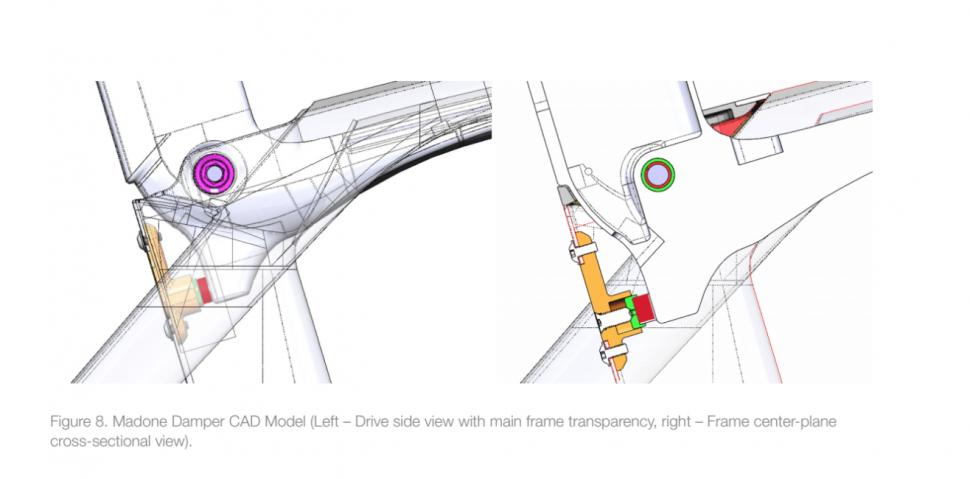
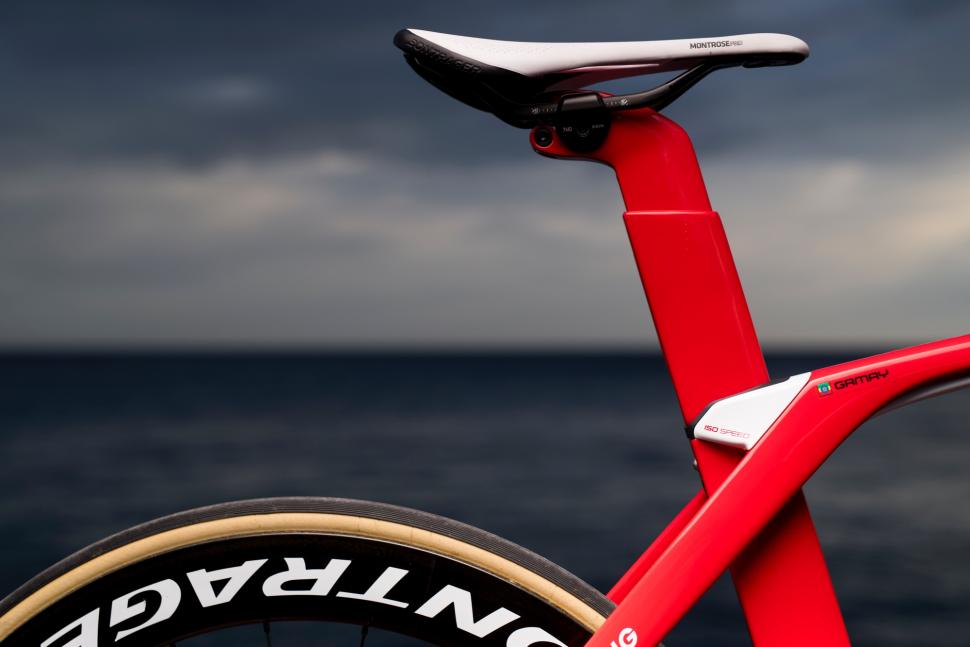
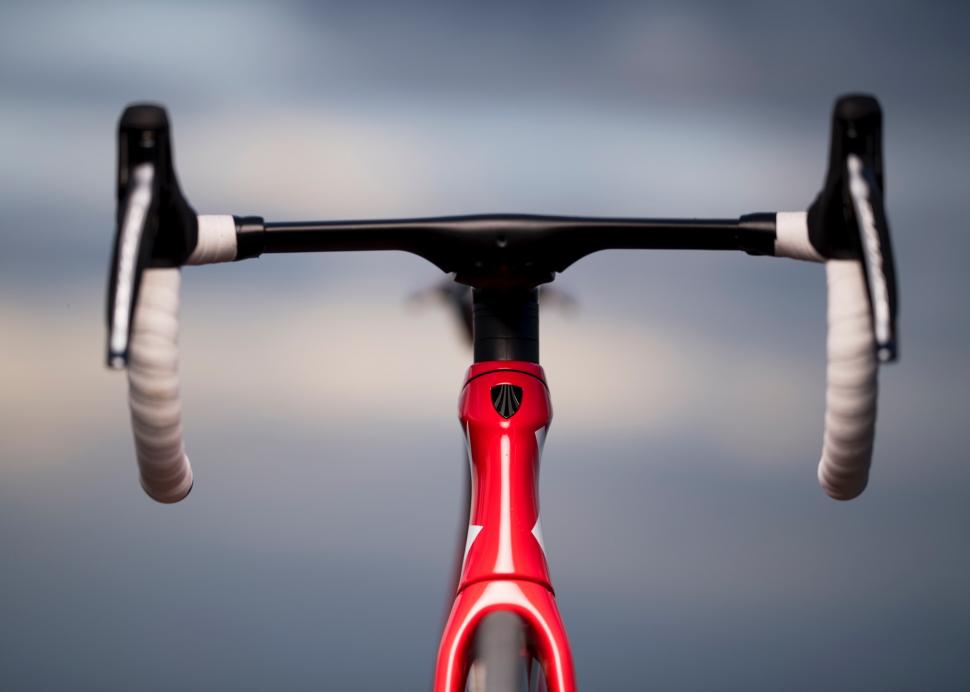

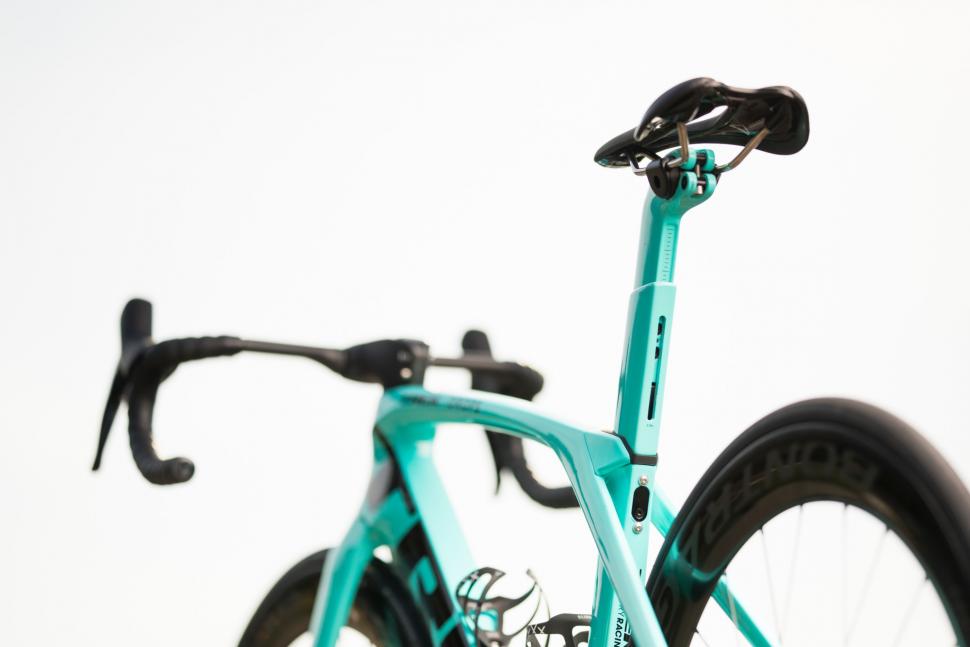
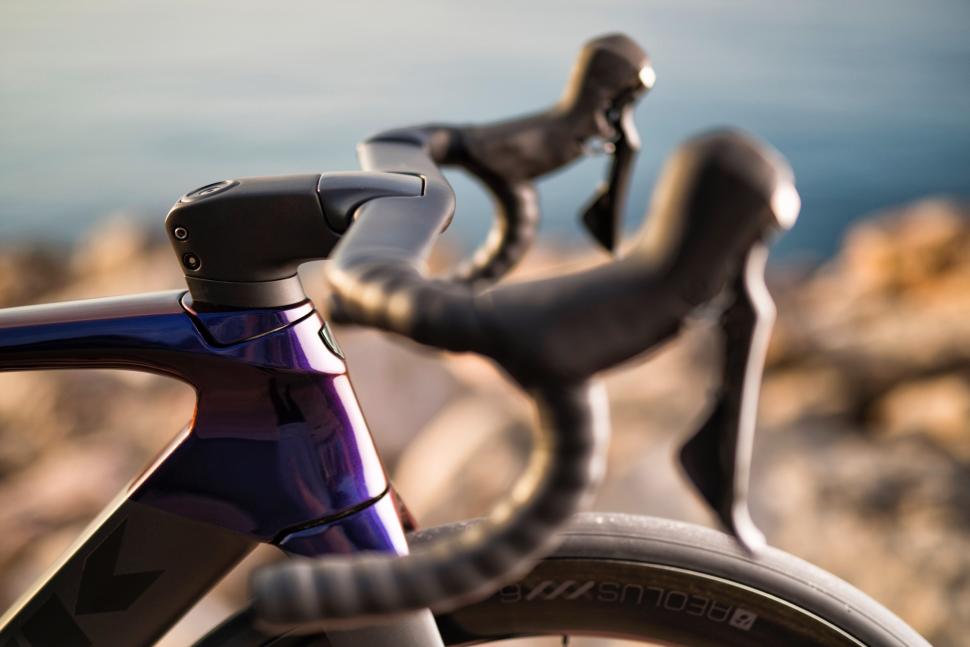


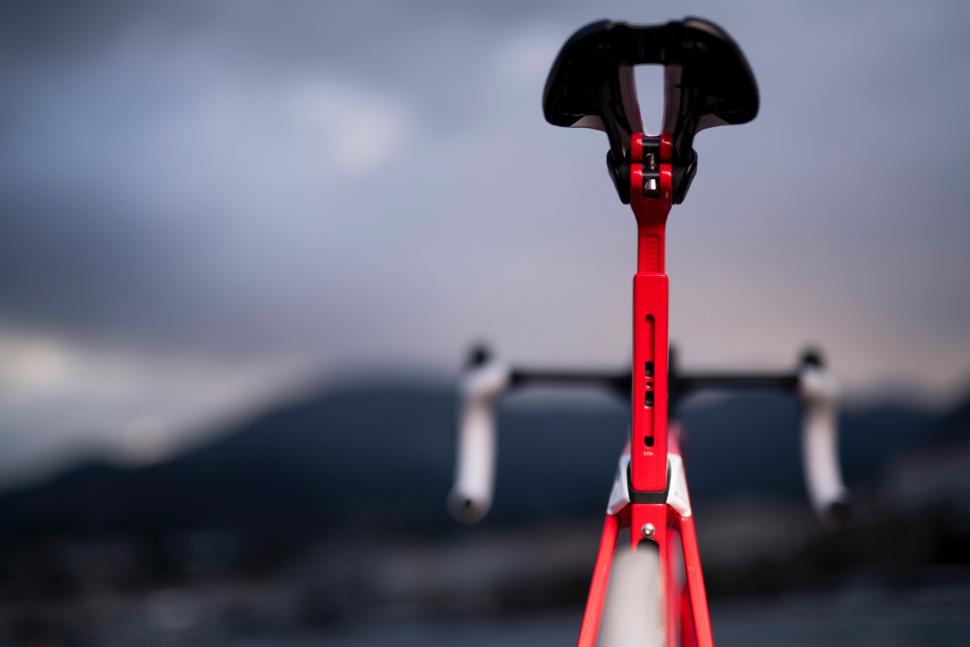
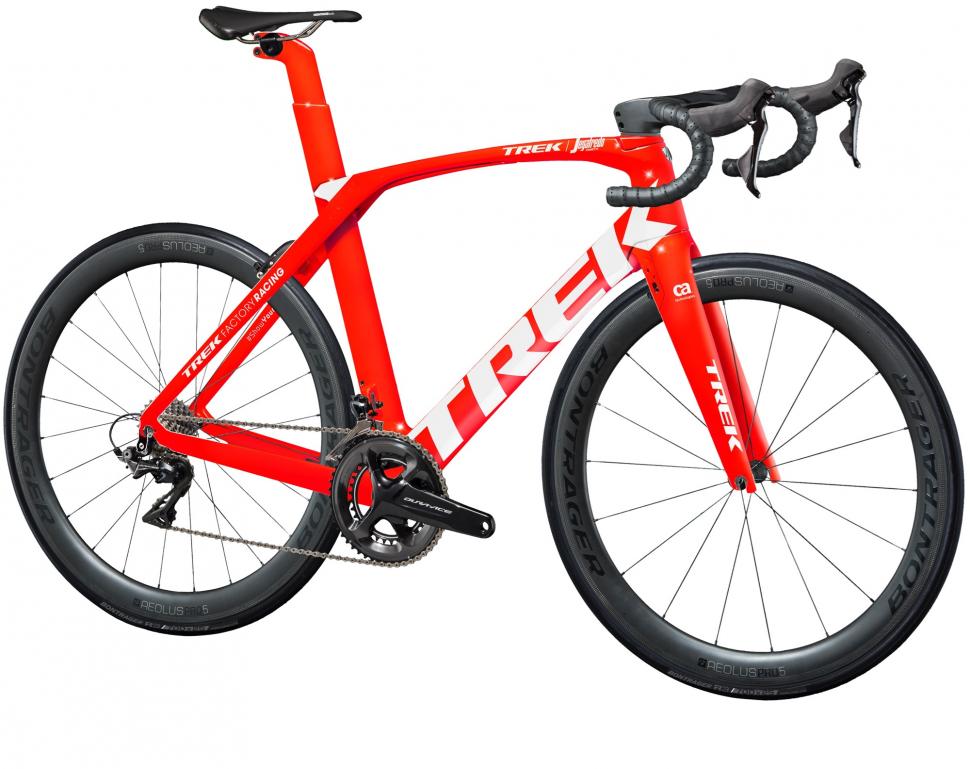
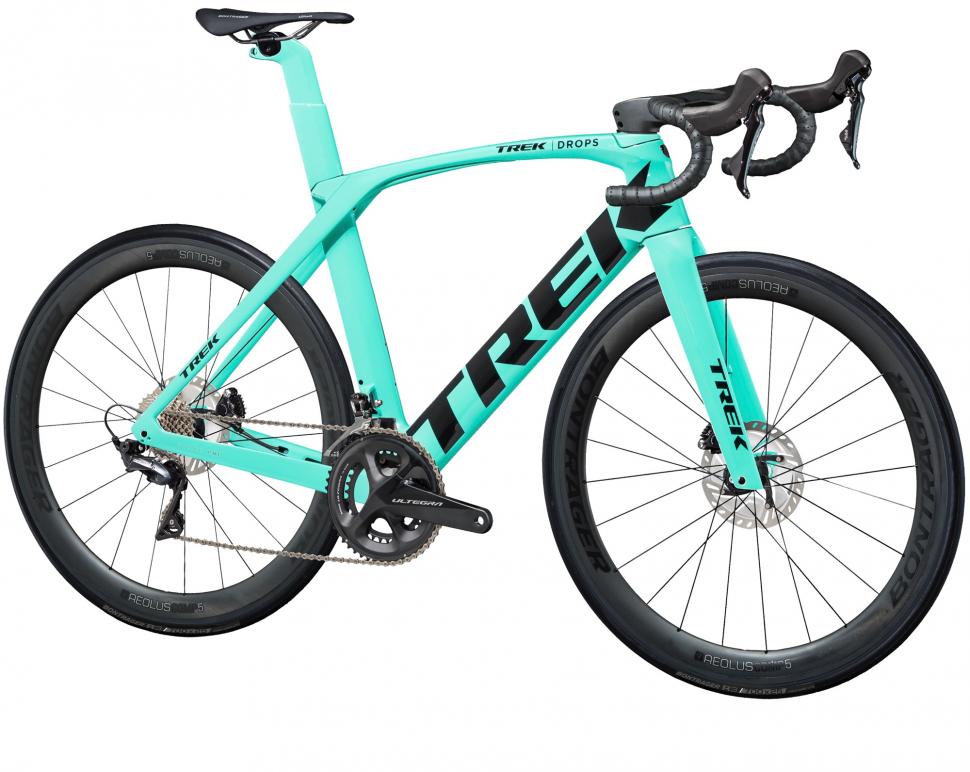
Add new comment
3 comments
Mmmm, that's a big sail of a thing in a side wind.
One must give TREK credit for producing the best looking and working rim-brake bike on the planet. I was a Spezialized guy till now, but that's history now.
White Paper link...
http://trek.scene7.com/is/content/TrekBicycleProducts/TK18_Madone_Whitep...